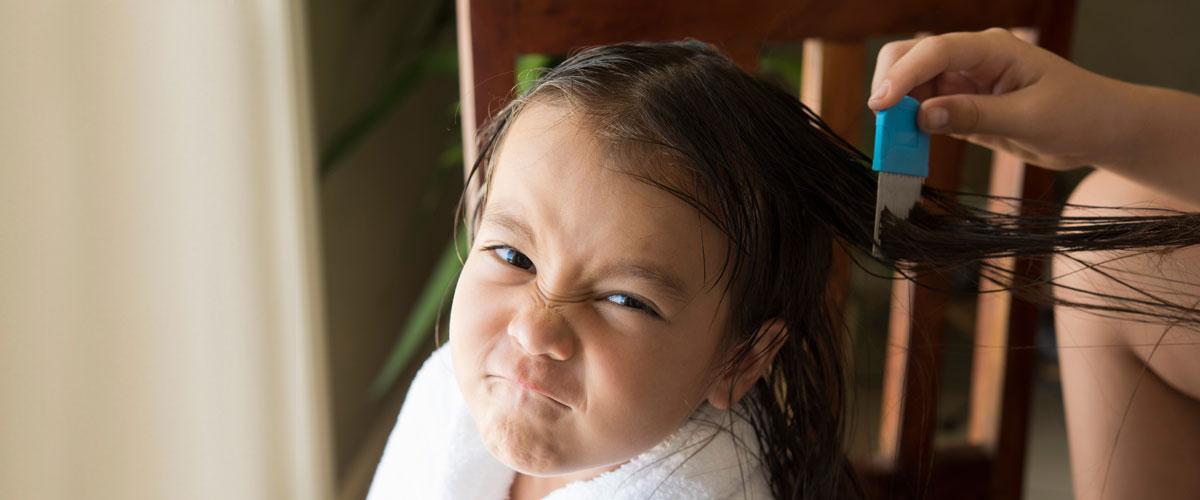We’ve all heard about the worrying increase in antibiotic-resistant bacteria, but did you know that around the world head lice are also becoming resistant to many common treatments? The ugly blood-suckers have been feeding on us for thousands of years1, yet despite our best efforts to break things off they show no signs of ending this very one-sided relationship. An article in The Telegraph reports that parents are fighting a losing battle against ‘mutated, indestructible super lice’2, and while it’s not quite as dramatic as all that, it is an issue you should keep in mind when looking for head lice treatment. In this article, I’ll look at the growing trends of head lice resistance and which treatments offer the best hope of putting an end to an infestation.
A worldwide problem
The first truly effective head lice treatment was thought to have been discovered by the Chinese around 100 A.D. when they extracted pyrethrum powder from a species of chrysanthemum3. But it wasn’t until the 1940s that the first modern commercial treatment appeared, containing the more refined active ingredient pyrethrin3. Around 40 years later, its synthetic cousin, permethrin, was introduced, but by the 1990s resistance to both of these insecticides was already being reported4. Malathion, another chemical treatment, has been shown to be more effective than pyrethrins and permethrin in the US5, but in the UK, where malathion has been available for several decades, resistance has been reported6. In Australia, there is evidence of head lice strains completely resistant to malathion in one school and others becoming resistant to pyrethrums and permethrin with kill rates down to 50% or less7.
Where do resistant head lice come from?
Resistant head lice come about in a similar way to antibiotic-resistant bacteria. Let’s say you have a population of 1,000 head lice in a school and every child is treated with a permethrin product. Of those 1,000 lice, 999 are killed, but one female louse survives because it had a random mutation in its genes that made it slightly harder to kill. One such mutation we know about is a change in the knockdown resistance gene (kdr), which gives lice reduced nerve sensitivity8. If that single surviving louse goes on to reproduce, the following generation could all have the resistance gene making them nearly impossible to kill with permethrin. Lingering chemical residues at a sub-lethal dose after a failed treatment are also thought to contribute to resistance9. Since the head lice life-cycle only takes around 3 weeks, resistance can develop rapidly in a population once it takes hold.
How to treat resistant head lice
One of the most common causes of treatment failure is not the presence of resistant lice, but from not completing the full course of treatment. With most types of head lice treatment, multiple applications are needed to break the head lice life cycle. This is because the eggs, known as nits, are much harder to kill and can sometimes survive the first treatment. Even if you can’t see any remaining lice or nits after a single treatment, there may be a few lingering survivors just waiting to restart the infestation as soon as your back is turned, so it’s important to follow the directions to the letter.
The good news is that even though head lice are getting tougher, we still have plenty of reliable ways to kill them. Two types of treatment for which there has been no reported resistance are:
Natural essential oils
Natural essential oils have now been clinically proven to kill head lice and eggs by interfering with the biochemical mechanisms of the louse, effectively poisoning them10,11. Furthermore, there is no known resistance to these types of treatments. We recommend trying MOOV Head Lice Solution or MOOV Head Lice Shampoo.
ALWAYS READ THE LABEL. FOLLOW THE DIRECTIONS FOR USE. IF SYMPTOMS PERSIST, WORSEN OR CHANGE UNEXPECTEDLY, TALK TO YOUR HEALTHCARE PROFESSIONAL.

